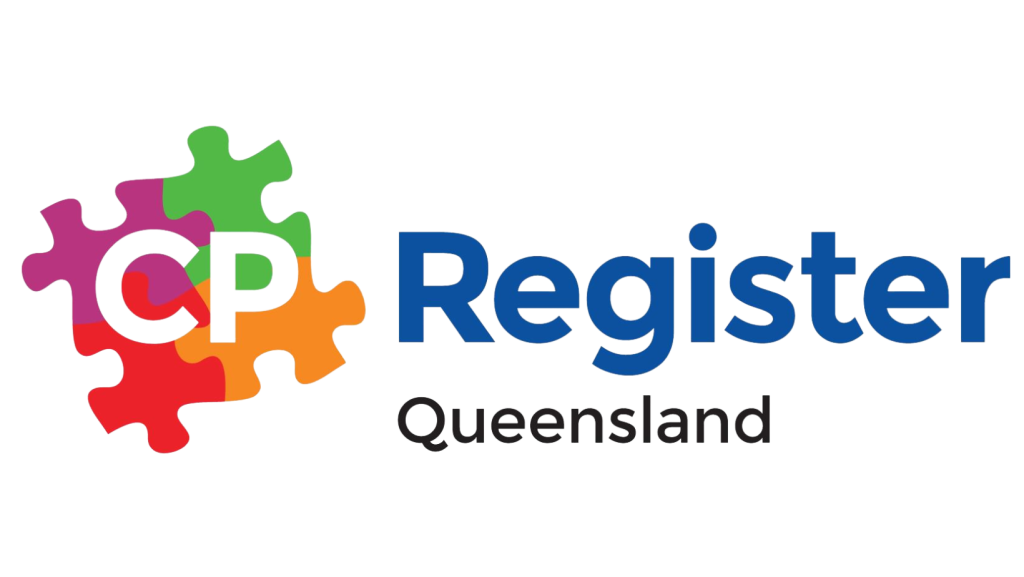Cerebral Palsy
Understanding cerebral palsy
Cerebral palsy is the most common childhood physical disability in Australia. It modifies the way the brain controls the body’s muscles resulting in movement and posture difficulties.
This condition may be accompanied by other difficulties, such as speech, vision, epilepsy, sensation, cognition, learning, and other medical complications.

Cerebral Palsy
Understanding Cerebral Palsy
Every 14 hours a child is born with cerebral palsy, making it the most common childhood physical disability in Australia. It modifies the way the brain controls the body’s muscles resulting in speech, movement and posture difficulties.
Having cerebral palsy can be like being inside a body you can’t fully control. This condition may be accompanied by other difficulties, such as vision, epilepsy, cognition and learning and other medical complications.

Cerebral Palsy
Definition
The definition of cerebral palsy used by the Queensland Cerebral Palsy Register is the same definition used by the Australian Cerebral Palsy Register and all other Australian state and territory cerebral palsy registers.
Cerebral palsy:
- Is an umbrella term for a group of disorders
- Is a condition that is permanent but not unchanging
- Involves a disorder of movement and/or posture and of motor function
- Is due to a non-progressive interference, lesion, or abnormality
- The interference, lesion, or abnormality originates in the immature brain
Key Facts
1 in 700
children were born with cerebral palsy in Australia (during 2015 - 2016)
34,000
Australians have cerebral palsy
- Many causes are unknown, although it is believed to be associated with injury or changes to the developing brain.
- Cerebral palsy occurs early in life and is a permanent but not unchanging condition.
- The severity of cerebral palsy varies from person to person.
Motor Type and Distribution
Motor Type
Cerebral palsy can be grouped into main types: spastic hypertonia, dyskinesia, ataxia, hypotonia, and mixed.
Spastic hypertonia is the most common motor type, making up around 84% of all people with cerebral palsy. Spasticity is a form of hypertonia (increased muscle tone) that varies depending on speed of movement. A person experiencing spasticity may have difficulty moving their limbs and adopting stable posture.
Dyskinesia is where muscle tone fluctuates or changes causing difficulty with control and co-ordination of movements affecting approximately 9% of all people with cerebral palsy. This can include dystonia (twisting and repetitive movements or abnormal postures), athetosis (slow involuntary writhing movements), and chorea (quick involuntary movements of the hands or feet).
Ataxia is reported in approximately 4% of people with cerebral palsy. It is characterised by movements with abnormal rhythm, force, and accuracy which can affect balance and coordination.
Hypotonia can be defined as abnormally low muscle tone or reduced resistance to passive movement affecting approximately 3% of all people with cerebral palsy.
Some people present with mixed types of cerebral palsy.
Distribution
Cerebral palsy can also be described by the location of the most affected body parts.
Both legs are affected.
The leg and arm on one side of the body are affected.
Both arms and legs are affected. The muscles of the trunk, face, and mouth can also be affected.
- Sanger, T. D., Delgado, M. R., Gaebler-Spira, D., Hallett, M., & Mink, J. W. (2003). Classification and Definition of Disorders Causing Hypertonia in Childhood. Pediatrics, 111(1), e89-97. https://doi.org/10.1542/peds.111.1.e89
- Cans, C., Dolk, H., Platt, M. J., Colver, A., Prasauskiene, A., & Krägel-Oh-Mann, I. (2007). Recommendations from the SCPE collaborative group for defining and classifying cerebral palsy. Developmental Medicine and Child Neurology, 49(2), 35-38. https://doi.org/10.1111/j.1469-8749.2007.tb12626.x
Rosenbaum, P., Paneth, N., Leviton, A., Goldstein, M., & Bax, M. (2007). A report: the definition and classification of cerebral palsy. Developmental Medicine and Child Neurology, 49(s109), 8-14. https://doi.org/10.1111/j.1469-8749.2007.tb12610.x
- Australian Cerebral Palsy Register Group. (2023). Report of the Australian Cerebral Palsy Register Birth Years 1995-2016. https://cpregister.com/publications-and-other-resources/
Living with
Cerebral Palsy
Cerebral palsy is a movement disability that can affect many aspects of daily life across the lifespan.
Fortunately, there are many support services available that will allow a person living with cerebral palsy to live a life full of choice and passion.
Services Include:
- Early intervention strategies.
- Assisted and independent living options from in home support and purpose-built specialised housing.
- Employment support including preparing a resume to finding and keeping ongoing employment.
- Recreational and life skills programs from cooking, community inclusion, managing money, creative programs, and more.
- Equipment aids including assistive technology, communication devices, mobility aids, and in-home equipment.

